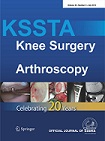
ARTHROPLASTY
Ultracongruent tibial insert vs. posterior-stabilized implant in total knee arthroplasty
Knee Surg Sports Traumatol Arthrosc. 2017 Nov;25(11):3515-3521136 patients scheduled for total knee arthroplasty were randomized to an ultracongruent tibial insert or a posterior-stabilized total knee implant. Patients were assessed over a 1-year follow-up. Groups did not demonstrate any significant differences in knee range of motion or function on the UCLA activity score at 1 year. Oxford Knee Scores were significantly greater in the UC group compared to the PS group at 1 year, primarily due to the Pain subscore.
Unlock the full ACE Report
You have access to {0} free articles per month.Click below to unlock and view this {1}
Unlock NowCritical appraisals of the latest, high-impact randomized controlled trials and systematic reviews in orthopaedics
Access to OrthoEvidence podcast content, including collaborations with the Journal of Bone and Joint Surgery, interviews with internationally recognized surgeons, and roundtable discussions on orthopaedic news and topics
Subscription to The Pulse, a twice-weekly evidence-based newsletter designed to help you make better clinical decisions
Exclusive access to original content articles, including in-house systematic reviews, and articles on health research methods and hot orthopaedic topics
Or upgrade today and gain access to all OrthoEvidence content for just $1.99 per week.
Already have an account? Log in


Subscribe to "The Pulse"
Evidence-Based Orthopaedics direct to your inbox.
{0} of {1} free articles
Become an OrthoEvidence Premium Member. Expand your perspective with high-quality evidence.
Upgrade Now












































































